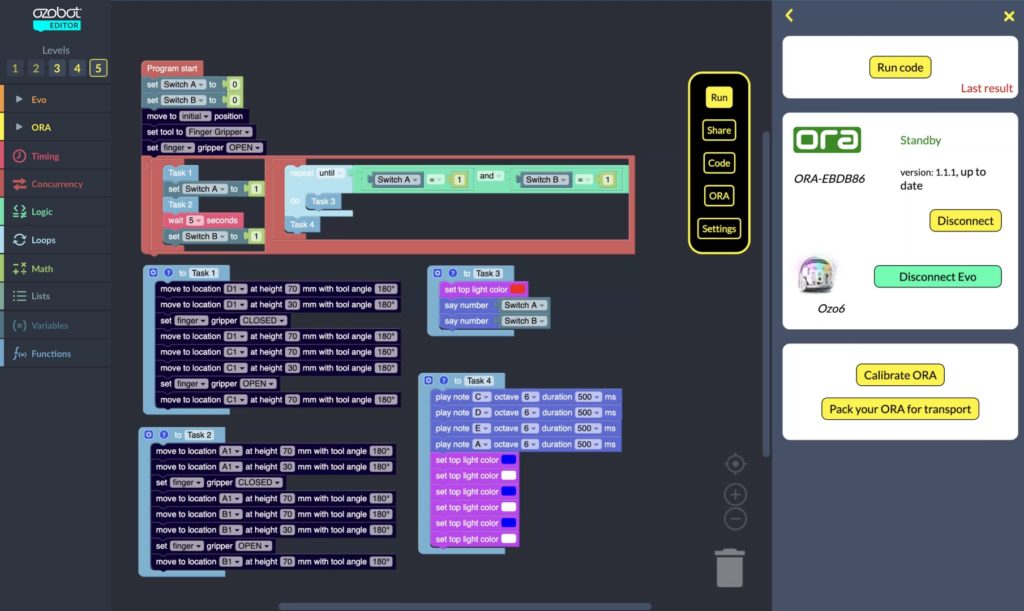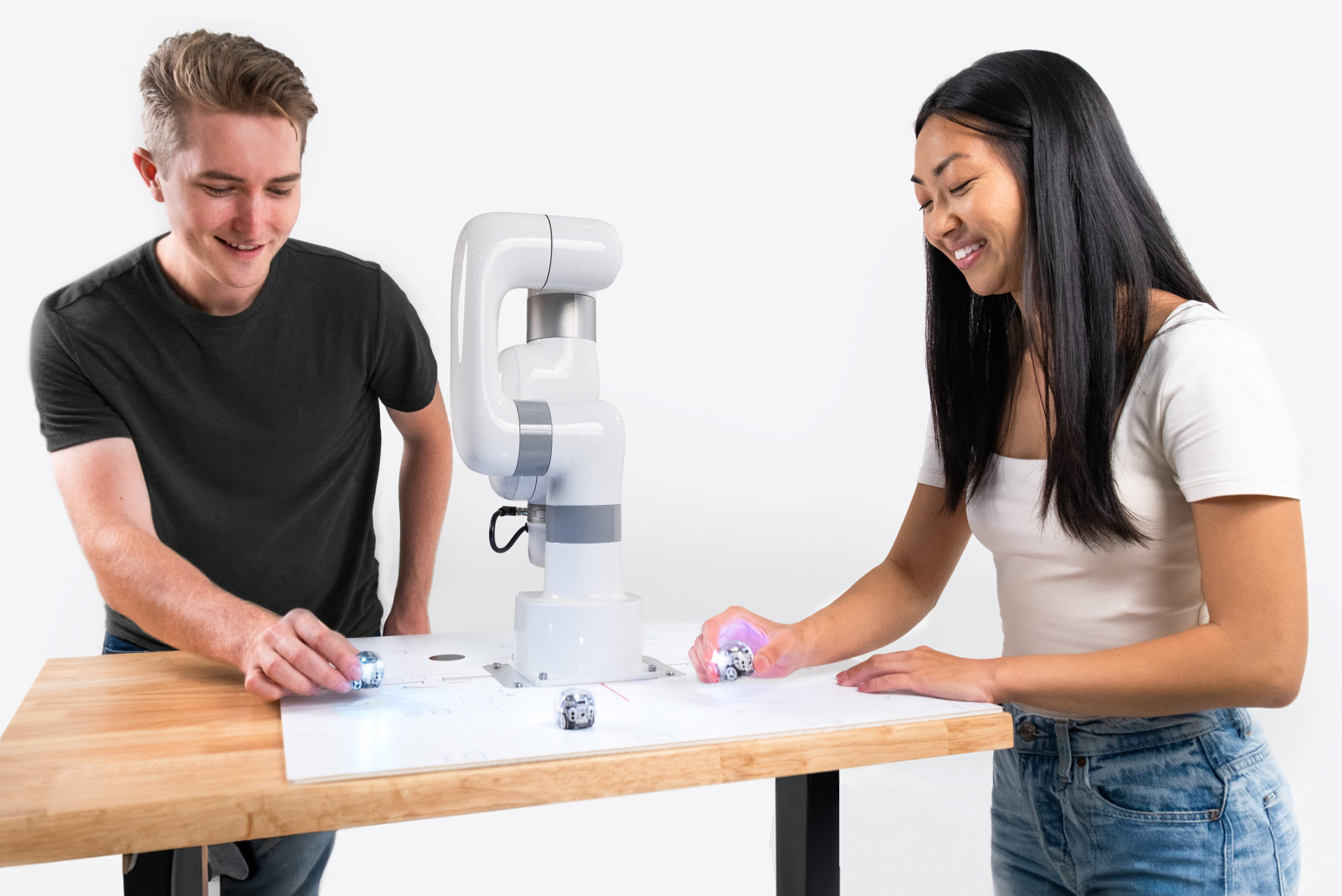At an event launching a new initiative for career-connected learning in November 2023, U.S. Secretary of Education Miguel Cardona stated: “It’s time we bridge the divide between our K-12 systems and our college, career, and industry preparation programs, which leave too many students behind… An education system reimagined for the 21st century engages youth of all ages in the power of career-connected learning and provides every student with the opportunity to gain real-life work experience, earn college credits, and make progress towards an industry credential before they graduate high school.”
At both education policy and grassroots levels, we are experiencing a shift that calls to question how much traditional education prepares students for the world that awaits them. Students need more than theory—they require practical tools and competencies to be career-ready in dynamic, real-world environments. High-quality STEM education is one essential pathway that equips students with the critical thinking, problem-solving, and technical skills necessary for future careers, especially in fields driven by rapid technological advancements.
Career and Technical Education (CTE) focuses primarily on career readiness, integrating hands-on training with the critical thinking that prepares learners for both today’s job market and tomorrow’s innovations.
CTE refers to coursework that prepares students for careers by providing them with both academic knowledge and practical skills related to specific industries or trades. CTE programs are typically offered at the middle school, high school, and post-secondary levels and include a wide range of career pathways, such as:
- Health Sciences (e.g., nursing, medical technology)
- Information Technology (e.g., programming, cybersecurity)
- Engineering and Manufacturing
- Business and Finance
- Agriculture
- Culinary Arts
- Skilled Trades (e.g., carpentry, electrical work)
While the specifics vary by age and context, a typical day for students engaged in CTE looks quite different from traditional school models. Math, science, and literacy skills are often taught within the context of industry projects. For example, students might learn geometry principles while working on carpentry projects or study biology while training in a healthcare setting. There is a much greater emphasis on hands-on projects aligned with upskilling in their chosen industry. Automotive students could be repairing engines, culinary students might be preparing multi-course meals, and technology students could be coding or designing apps. Each of these courses is taught by an industry professional who is an expert at the very same skills students are there to hone, creating an apprenticeship-type learning experience.
CTE’s Rise and Relevance
Formerly referred to as “vocational” or “trade school”, CTE has seen a rebrand of sorts in public secondary education. In the ‘90s and early 2000s, choosing to attend a vocational school often came with the stigma that the student couldn’t succeed in traditional academic settings. The push was that every student, regardless of their interests or desire to do so, should attend a four-year university if they wanted a shot at a successful career. As a consequence of vocational schooling’s lack of appeal, many industries have seen a major skills gap, where there are more job openings than qualified candidates.
The rise in CTE’s popularity and evolution reflects a broader reckoning in K-12 education: not every student needs a traditional path to a four-year college degree, and by pushing this notion, we have inadvertently limited opportunities for our young people. Unlike conventional settings that emphasize broad theory, these programs align learning with specific skills, offering students a clearer path from education to livelihood. Moreover, students who pursue CTE in middle and high school find themselves re-invigorated by learning experiences that align with their interests, rather than sitting in, say, a literature class writing an analysis of Dickinson when their true talent lies in hands-on fields like automotive technology, digital media, or culinary arts. And because CTE benefits both families and industries, it has become a bipartisan priority, garnering support from both Democrats and Republicans.
Preparing Students for the Future with ORA and CTE-Driven Curriculum
When we developed ORA, Ozobot’s Robotic Arm, we knew it was something unique for the same reasons that make CTE so impactful. ORA is much more sophisticated than a simple robotic toy, yet approachable and safe to be used by students who have zero experience with industrial robots. This makes it the ideal tool for students to get the hands-on experience and skill development they need to prepare them for work in a variety of industries, from manufacturing to agriculture to robotics to automation.

We also knew that ORA needed a curriculum that was its match in both approachability and relevance so educators had what they needed to use it on the ground. We interviewed educational leaders in both CTE and 6-12 computer science and engineering to learn more about what they want to see in coursework for a robotic arm. We are thrilled to introduce our first module, ORA Essentials, which includes several features to bring our robotic arm to life in middle school, high school, and CTE alike.
Module 1 features:
- A 12-lesson scaffolded approach that starts with safety protocols then focuses on the fundamental elements of learning to program a robotic arm.
- A classic problem-based learning design. Each lesson concludes with a hands-on task for students to complete with ORA that is aligned to the work of industry professionals.
- Videos for both students and teachers. The student videos outline objectives and provide visual examples of key concepts, while the teacher videos (to be added soon) guide setup and programming, ensuring even those new to robotic arms feel confident using ORA. All videos have several examples of the robotic arm demonstrating the learning and tasks students are focusing on for a specific lesson.
- Student Activity Sheets that are ready to print in PDF form and include a daily Exit Ticket assessment so teachers can readily assess student progress. Teacher Answer Key is also included for each lesson.
- A module scope and sequence that simplifies long-term planning and standards deconstruction and helps teachers see how the curriculum fits into the broader goals of a specific course.
- Lesson extensions that provide an additional challenge for students who are ready and can be used in every CTE and high school course as additional independent challenges with the robotic arm.
- Alignment to the key CTE and Computer Science Standards that drive instruction across the country, including ISTE, CSTA, NGSS, STEL, TEKS Technology, and NCC CTE.
With ORA Essentials, we’re excited to offer a robotic arm curriculum that not only introduces students to the fundamentals of robotic arms but also immerses them in the problem-solving and hands-on experiences that mirror industry practices. ORA Essentials is a great curricular fit for a variety of 6-12 courses and settings, including but not limited to Middle School tech, Middle or High School maker’s spaces, secondary STEM labs, introductory engineering, and so much more. By focusing on project-based, hands-on learning with multiple career connections, we have ensured the curriculum can be plugged into a variety of secondary settings, CTE or otherwise.
To learn more about our introductory robotic arm curriculum, you can schedule some time with Ozobot’s Edu team. Or, to see a live demo of ORA to better understand how it can fit into your specific setting, reach out to Ozobot’s Sales Team.









